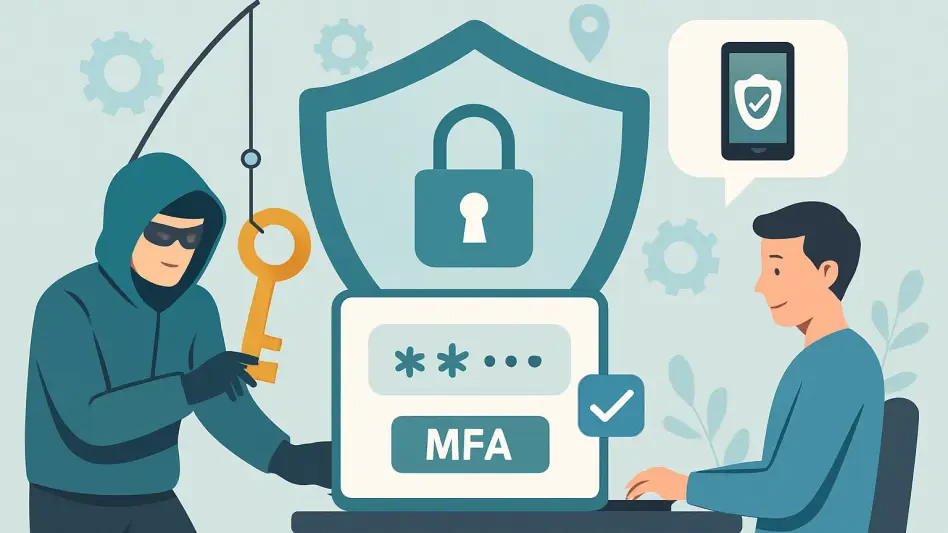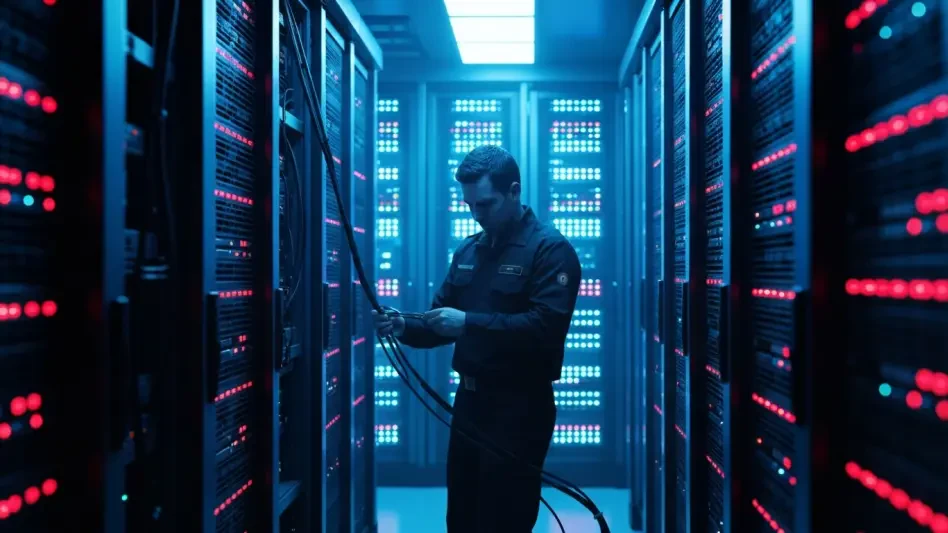In today’s digital landscape, imagine a help desk agent receiving an urgent call from someone claiming to be a senior executive, pleading for an immediate multifactor authentication (MFA) reset due to a supposed emergency, with a convincing tone and a plausible story that creates intense pressure. Yet, beneath this facade lies a sophisticated social engineering attack aimed at exploiting human trust to breach enterprise security. Such scenarios are becoming alarmingly common, targeting frontline staff who serve as gatekeepers to sensitive systems. The rise of these human-centric cyberattacks underscores a pressing need for robust defenses, as traditional technical safeguards alone cannot counter manipulation tactics.
This growing threat demands a strategic approach to protect organizations from devastating consequences like data breaches or financial loss. Help desk teams, often the first point of contact for access requests, stand on the front lines of this battle. Equipping them with best practices is not just a security measure but a critical investment in safeguarding trust and integrity across an enterprise. The following guide explores actionable strategies to fortify help desk defenses against MFA social engineering, delving into vulnerabilities, warning signs, and practical solutions to transform potential weaknesses into strengths.
Understanding the Threat of MFA Social Engineering
Social engineering attacks targeting MFA resets and access escalations pose an escalating danger to help desk teams, exploiting not technical flaws but human psychology. Attackers leverage tactics like urgency, familiarity, or authority to manipulate agents into granting unauthorized access, often through phone calls rather than digital channels. These methods bypass even advanced security measures, making them a formidable challenge in the cybersecurity realm and a top concern for enterprises of all sizes.
The significance of this threat lies in its ability to turn trusted processes, such as password resets, into entry points for malicious actors. Unlike malware or phishing, these attacks prey on natural instincts to help or comply, rendering traditional defenses less effective. As a result, help desk staff must be prepared to recognize and resist such manipulation, serving as the first barrier against breaches that could compromise sensitive data.
To address this issue comprehensively, focus must be placed on equipping frontline personnel with the right mindset and tools. This involves understanding key vulnerabilities, spotting warning signs, adopting best practices, and fostering organizational support. Each of these areas plays a vital role in building a resilient defense, ensuring that help desk teams are not just responders but proactive protectors against social engineering schemes.
Why Defending Against MFA Social Engineering Matters
Help desk teams hold a pivotal role as gatekeepers of enterprise access, managing critical tasks like MFA resets that, if mishandled, can open doors to attackers. Their position makes them prime targets for social engineering, where a single lapse in judgment could allow threat actors to infiltrate systems. This vulnerability highlights the urgent need to shield these staff members from manipulation tactics that exploit trust or urgency.
The consequences of failing to defend against such attacks are severe, ranging from data breaches to significant financial losses. A successful breach could expose customer information, disrupt operations, or damage an organization’s reputation, leading to long-term setbacks. These high stakes emphasize why help desk security must be prioritized as a core component of broader cybersecurity strategies.
On the flip side, implementing strong defense mechanisms offers substantial benefits, including enhanced protection of sensitive assets and reinforcement of stakeholder trust. By preparing help desk staff to counter social engineering, organizations can transform a potential liability into a formidable line of defense. This proactive stance not only mitigates risks but also builds confidence in the security posture across all levels of the enterprise.
Best Practices for Help Desks to Counter MFA Social Engineering
To combat the sophisticated threat of MFA social engineering, help desk teams must adopt a range of actionable strategies that address both procedural and behavioral dimensions. These best practices are designed to be practical and implementable, ensuring that frontline staff are well-equipped to handle suspicious interactions. By focusing on vigilance and structure, organizations can significantly reduce the risk of unauthorized access.
Beyond just reacting to threats, these strategies aim to instill a proactive mindset among agents, empowering them to question and verify rather than comply blindly. The following sections break down key approaches, from training and protocols to cultural shifts, providing a comprehensive framework for defense. Each practice is supported by real-world relevance to illustrate its impact in preventing breaches.
Train Staff to Recognize Red Flags and Adopt Skepticism
A critical step in defending against social engineering is training help desk staff to identify warning signs during interactions. Indicators such as urgent requests, calls from unfamiliar numbers, or overly persuasive tones often signal a potential attack. Equipping agents with the ability to spot these red flags ensures they can pause and assess situations before taking action that could compromise security.
Fostering a mindset of practical skepticism is equally important, encouraging staff to treat every MFA reset or access request as a possible threat. This approach does not mean distrusting all users but rather applying consistent scrutiny to verify legitimacy. Such vigilance acts as a first layer of defense, preventing attackers from exploiting momentary lapses in judgment.
Real-World Example: Spotting Urgency in a Vishing Attempt
Consider a scenario where a help desk agent receives a call from someone claiming to be an executive needing an urgent MFA reset due to a critical deadline. Noticing the excessive pressure and lack of verifiable details, the agent escalates the request for further verification instead of complying immediately. This quick thinking prevents a potential breach, demonstrating how recognizing urgency as a red flag can thwart an attack.
Implement Strict Verification and Escalation Protocols
Establishing rigorous verification processes is essential to ensure that only authorized individuals gain access to systems. Out-of-band methods, such as calling a known number, contacting a manager, or using video checks for sensitive requests, provide a secure way to confirm identities. These steps add a crucial barrier against attackers impersonating legitimate users.
Consistency in applying these protocols is non-negotiable, even when dealing with individuals claiming to hold senior positions. Exceptions cannot be made, as attackers often pose as executives to exploit perceived authority. By maintaining strict adherence to escalation and verification rules, help desk teams can prevent manipulation from undermining security measures.
Case Study: Preventing Access Through Secure Verification
In one instance, a help desk team received a request from a supposed high-ranking official demanding immediate access due to an emergency. Despite the pressure, the agents followed protocol by verifying the identity through a known contact channel, uncovering the request as fraudulent. This adherence to process showcases how structured verification can stop social engineering attempts in their tracks.
Foster Ongoing Training and Simulated Attack Exercises
Continuous training is vital to keep help desk staff prepared for evolving social engineering tactics, as one-time sessions quickly lose relevance. Regular refreshers, combined with realistic simulations like vishing exercises, help agents practice identifying and responding to threats in a controlled environment. This hands-on approach sharpens skills and builds confidence in handling real-world scenarios.
Collaboration between help desk and security teams further enhances preparedness by ensuring suspicious activities are flagged early. Joint incident response drills create a seamless communication channel, allowing for swift action when anomalies arise. Such integration strengthens the overall defense framework, making it harder for attackers to succeed.
Success Story: Training Pays Off in a Simulated Attack
During a simulated attack exercise, a help desk agent identified a fake call attempting to gain MFA access by detecting inconsistencies in the caller’s story. By following training protocols and escalating the issue, the agent stopped the mock breach, proving the value of regular drills. This outcome highlights how ongoing preparation translates into effective real-time responses.
Build a Security-First Organizational Culture
Redefining help desk priorities to emphasize security over speed during access requests is a fundamental cultural shift needed to counter social engineering. Agents must feel empowered to delay resolutions for verification without fear of reprimand, ensuring that thoroughness takes precedence. This mindset reframes customer service as a balance of support and protection.
Leadership plays a pivotal role in reinforcing this culture by supporting agents who question suspicious interactions and celebrating successful defenses. Public recognition of such actions boosts morale and encourages adherence to security protocols. A unified commitment from all levels of an organization solidifies this approach as a cornerstone of defense.
Cultural Shift in Action: Leadership Backing Security Protocols
In a notable example, a help desk team delayed a ticket resolution to verify a questionable request, despite user frustration, and uncovered a potential threat. Backed by leadership’s explicit support for prioritizing security, the team felt confident in their decision, averting a breach. This instance illustrates how organizational endorsement empowers staff to uphold critical safeguards.
Final Thoughts and Practical Recommendations
Reflecting on the strategies discussed, it becomes clear that defending against MFA social engineering requires a blend of procedural rigor, continuous training, and a security-first culture. Help desk teams, once seen as potential vulnerabilities, prove they can become powerful frontline defenders when equipped with the right preparation and empowerment. The journey to fortify these teams demonstrates that human vigilance is as crucial as any technological safeguard.
Looking ahead, organizations are encouraged to take immediate steps by assessing current help desk protocols and identifying gaps in training or verification processes. Small businesses, even with limited resources, can start by implementing basic out-of-band verification and conducting low-cost simulations to build awareness. These initial actions lay the groundwork for stronger defenses without overwhelming budgets.
A key consideration that emerges is the need to balance user experience with security demands, ensuring that protective measures do not alienate legitimate users. Leadership commitment also stands out as a linchpin for sustaining long-term strategies, requiring active involvement to champion and fund these efforts. By focusing on these next steps, enterprises position themselves to stay ahead of evolving threats, turning challenges into opportunities for resilience.








